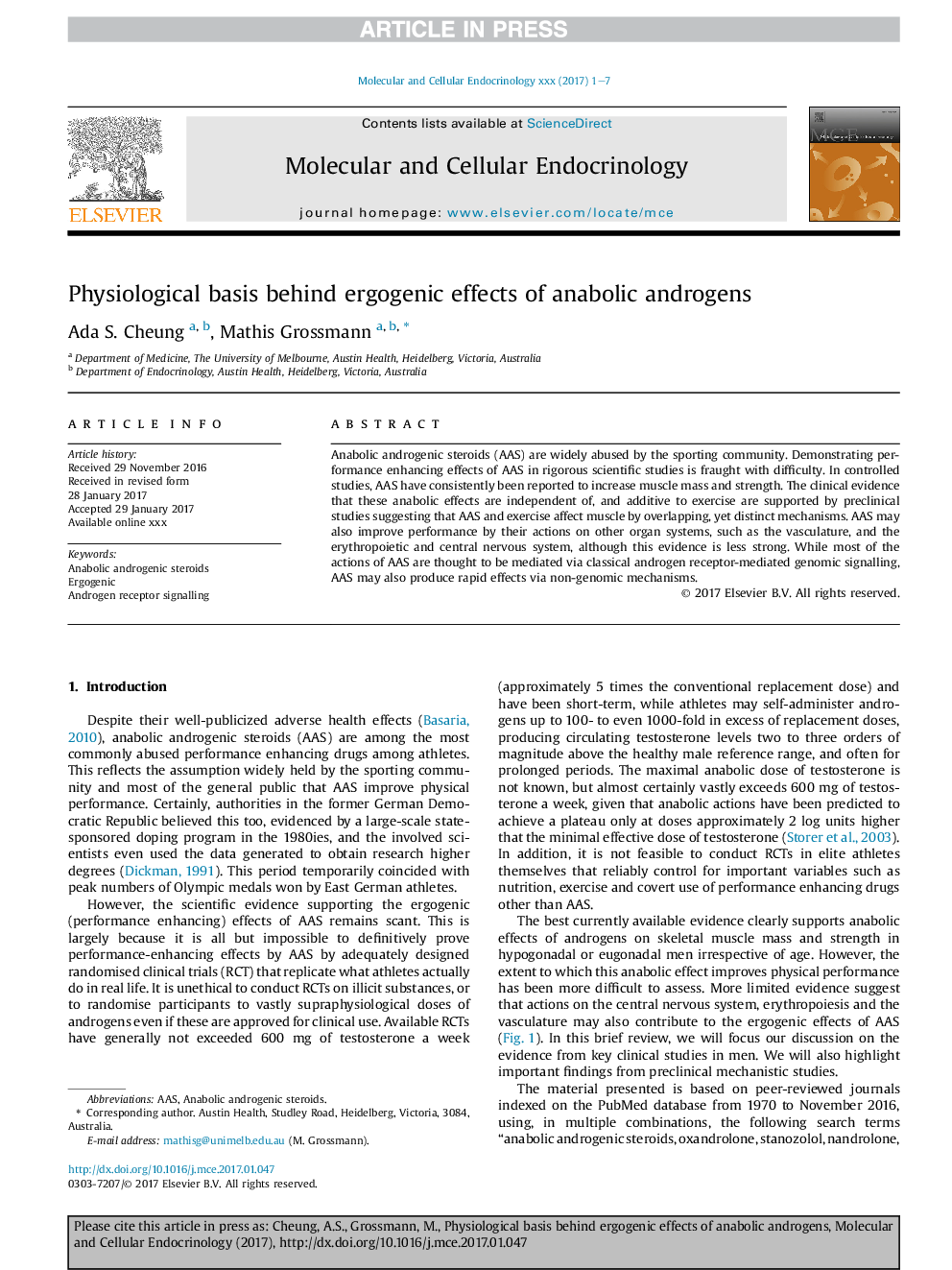| Article ID | Journal | Published Year | Pages | File Type |
|---|---|---|---|---|
| 8476495 | Molecular and Cellular Endocrinology | 2018 | 7 Pages |
Abstract
Anabolic androgenic steroids (AAS) are widely abused by the sporting community. Demonstrating performance enhancing effects of AAS in rigorous scientific studies is fraught with difficulty. In controlled studies, AAS have consistently been reported to increase muscle mass and strength. The clinical evidence that these anabolic effects are independent of, and additive to exercise are supported by preclinical studies suggesting that AAS and exercise affect muscle by overlapping, yet distinct mechanisms. AAS may also improve performance by their actions on other organ systems, such as the vasculature, and the erythropoietic and central nervous system, although this evidence is less strong. While most of the actions of AAS are thought to be mediated via classical androgen receptor-mediated genomic signalling, AAS may also produce rapid effects via non-genomic mechanisms.
Related Topics
Life Sciences
Biochemistry, Genetics and Molecular Biology
Cell Biology
Authors
Ada S. Cheung, Mathis Grossmann,
